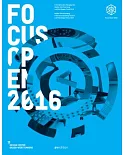Today’s internet generation no longer needs a home. It is mobile. It works six months in a shared office in Berlin, spends the summer in a caravan in Chile, and shows up just in time for the
next project at a temporary desk for a client in New York. Growing up with the internet and digital tools means living and working differently. Aside from a functioning wireless connection and
good coffee, web developers, designers, musicians, journalists, and other creative entrepreneurs need, above all, inspiration, new ideas, contacts, and international exchange. So they travel
from one co-working space to the next, alternating countries and continents, as well as accommodation, friends, and cultures.
The New Nomads documents this trend, in particular showing the architecture, interior design, modular furniture, and multi-functional tools that this nomadic generation has developed for its
own specific needs. Divided office floors with flexible uses, temporary living and working spaces that move with the nomads, multi-functional objects that are at once chair and storage space,
table and bed, or cupboard and desk are all featured in the book. The necessary infrastructure is not hidden away but becomes the distinguishing design feature. Compactness and functionality
meet a high standard for aesthetics, sustainability, and material.
Representatives of this nomadic generation can be found across the globe. They leave traces, especially in major cities but also in transportation hubs. The sleeping pod at the airport is
booked on short notice due to cancelled connecting flights. Desks, meeting rooms, showrooms, and catering are available for a few hours or days at a time if necessary. Experimental thinkers
develop mobile units that can be used in conjunction with existing infrastructures or on their own. Putting down roots now means acquiring a weekend abode, a community garden, or a tree
house.
Through these innovative types of room concepts and furniture, a multi-functional temporary living space becomes a nomadic home. What might currently be perceived as an exception is, in fact,
rapidly becoming the rule. The New Nomads explores a phenomenon that is already starting to make an impact on the work of architects, city planners, product designers, and employers
worldwide.





















